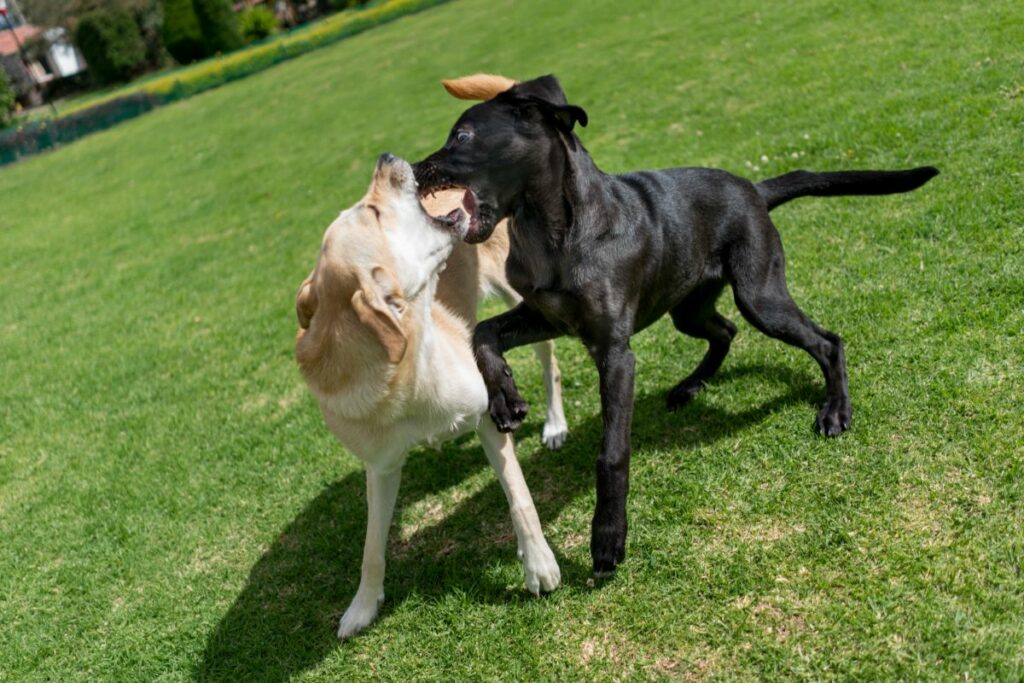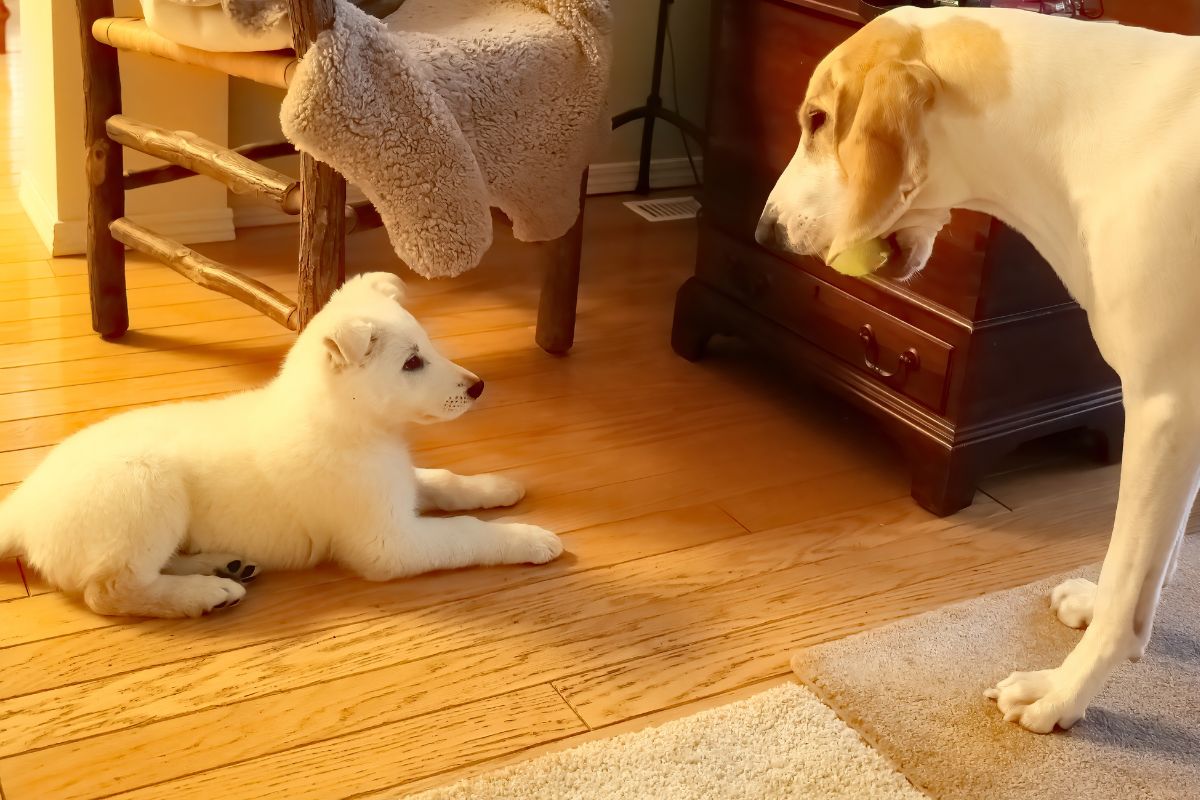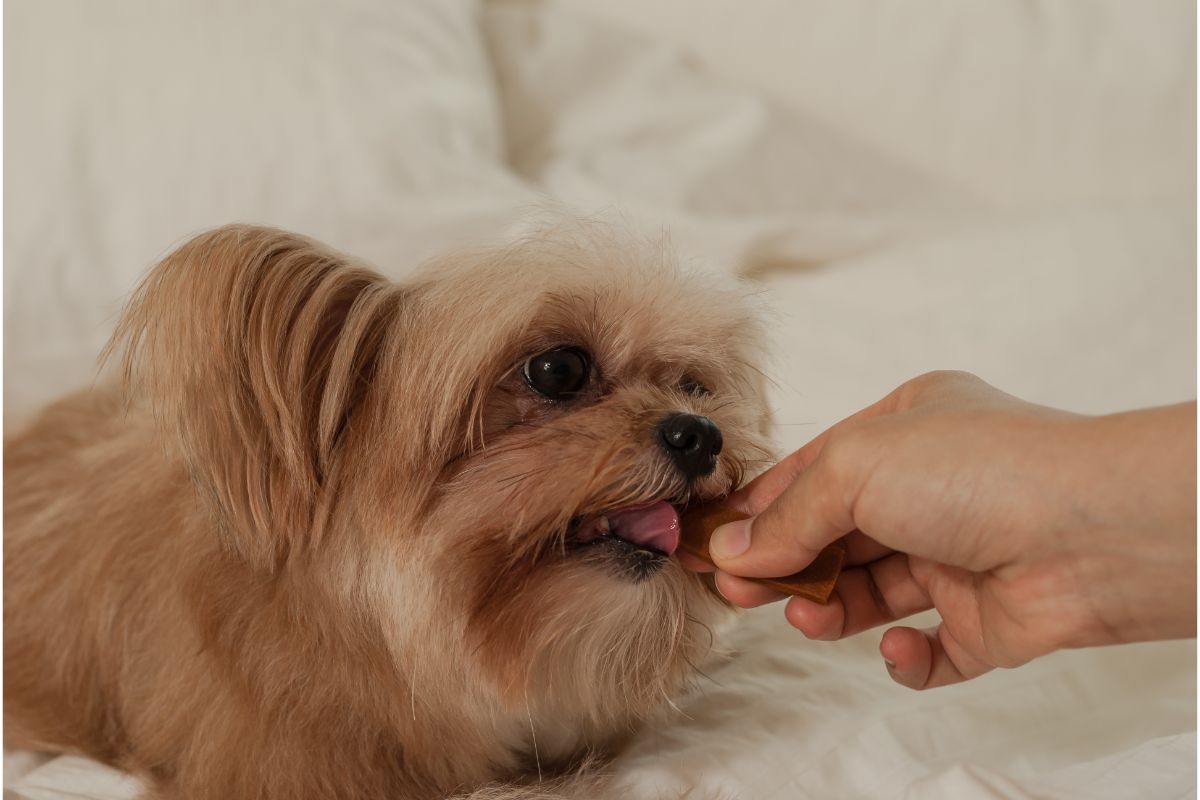When we welcome dogs into our homes, they can bring joy and companionship. But, if you have two or more dogs at home, occasionally, tensions can arise between them, leading to aggressive encounters.

Aggression between dogs can start for seemingly any reason and at any time. More often than not, though, it can begin when you add a new dog to a pack. Then again, conflict can start between two dogs who have lived side by side for years.
Fortunately, there are usually warning signs to look out for, but these often go unrecognized. Sometimes, something has changed in the relationship between the canines, or they have started to fight over resources, as packs are known to do.
Understanding how to prevent dog fights is essential for maintaining a safe and harmonious environment for both your canine companions and your family.
By implementing proactive strategies, establishing clear boundaries, and promoting positive interactions, you can effectively minimize the likelihood of conflicts and create a peaceful atmosphere where your dogs can live in harmony.
Preventing dog fights requires a combination of proactive measures and responsible ownership.
Today, we are going to help guide you through the possible reasons why your dogs are fighting at home. We will address ways to prevent conflict from happening and other important things to consider.
Preventing Dog Fights at Home
It is crucial to recognize and address any underlying causes of aggression, such as resource guarding or territorial behavior.
Through proper training, socialization, and providing adequate mental and physical stimulation, you can reduce stress and anxiety, promoting a more relaxed and balanced state of mind for your dogs.
Moreover, maintaining a structured routine, including regular exercise and feeding schedules, helps establish a predictable environment, reducing potential triggers for conflicts.
By prioritizing safety, communication, and the well-being of your furry companions, you can foster a harmonious coexistence within your home.
Let’s explore some ways to prevent dog fights in your home.
Provide Separate Beds
Although it may appear adorable to witness dogs snuggled together in a single bed, there comes a time when certain dogs may become unhappy with this arrangement due to factors such as illness, age, or decreased tolerance.
To ensure safety and minimize effort, it is recommended you train your dogs to relax on their own separate beds.
Introducing tie-downs can be a helpful tool in establishing this new guideline during the initial stages.
Some pet owners believe that dogs will feel less lonely if they share a crate. This might be the case when one dog experiences separation anxiety, or when space constraints exist within the house.
In certain instances, puppies are adopted or purchased together and sent home in a shared crate by the breeder, leading the owners to continue with this arrangement.
Similarly, limited space in the car often prompts owners to put both dogs in a single crate during travel.
However, sharing a crate is never advisable. Within the confined space, puppies may engage in playful behavior that can quickly escalate.
Dogs require enough room to avoid rough play when it becomes too intense. Unfortunately, this option is not available within a crate, potentially leading to dog fights.
This situation brings to mind the close quarters of long car rides spent trapped in the backseat with siblings.
Thankfully, seat belts kept us restrained, as it was only a matter of time before a heated argument over something trivial erupted during those endless miles!
Cut Down Playful Wrestling Time
When you get a new dog, you will feel an initial sense of joy and happiness, which is typically shared by all.
Engaging in playful wrestling and games becomes a part of the daily routine. However, if these wrestling matches are left unchecked during a dog’s adolescent stage, they can prolong and escalate, eventually resulting in skirmishes or full-blown dog fights.
To prevent these from happening, it is crucial to limit the duration of play sessions. Breaking up extended playtime with positive reinforcement-based training or engaging puzzle activities can redirect their energy and prevent tensions from escalating.
When deciding whether to interrupt a play session between dogs, there are several factors to consider:
- Number of bites every minute – If the frequency of grabbing and biting increases rapidly, it’s a signal to break up the play.
- Time period when playing – If the dogs would play continuously for an hour if allowed, it raises concerns about their behavior as they mature. It’s best to limit play sessions to shorter periods and incorporate activities like fetch, recalls, or separate time in crates with individual bones or puzzles.
- Tug of war with a toy – While moderate tug of war is generally acceptable, if the game persists for an extended period or if you’re unable to get them to release the toy, it’s time to intervene and take the toy away.
- Vocalization (i.e. barking, growling, etc.) – Intensified barks, growls, and whines indicate escalating tension. It’s advisable to give them a break if this occurs.
- Other dogs bossing the pack around – If other dogs in the pack start barking or interfering while the dogs are playing, it indicates that the play has become too serious. This is a clear sign that a break is needed.
By carefully monitoring these aspects during play sessions, you can ensure a safe and controlled environment for your dogs.

Monitor Possession (Stop Your Dog From Stealing Another Dog’s Possessions)
The most common behavior that humans allow in dogs, which can lead to dog fights, is the act of grabbing toys or bones from other dogs.
Dogs employ various strategies to steal items from their peers. Some dogs patiently wait and stare down the other dog until they drop the item, while others chase them down, incessantly licking their mouth until they surrender the coveted object.
In certain cases, we unintentionally contribute to this behavior by playing fetch with one toy among multiple dogs, leading to competition between the dogs and reinforcing the tendency to steal during play.
Regardless of the strategy used, it is crucial for owners to intervene and prevent dogs from taking other dogs’ toys or possessions.
One simple approach is to ensure there is an abundance of toys or bones available in the environment so that there is always another item accessible to the dog that is seeking one. If there are three dogs, we recommend you have six or seven toys or bones present.
Many dogs want what they can’t have. In these “grass is always greener on the other side” instances, such dogs will incessantly desire what the other dog possesses, regardless of the number of available items.
Addressing this issue requires the use of leashes, strong responses to cues like “drop it,” tie downs, and vigilant supervision to break this bad habit.
During fetch sessions, it is important to train your dog to fetch and focus on their own toy, leaving the other dog and its toy undisturbed.
This training process may involve the use of leashes and strategic training sessions to effectively reinforce the right behavior.
Feed Dogs Separately
If you have more than one dog, then you will know how territorial and aggressive dogs can get around food.
When you have multiple dogs in the home, it is common to have measures in place to prevent one dog from stealing another dog’s food.
However, problems often arise when supervision becomes less vigilant over time, allowing one dog to bully the other due to finishing its meal first. To ensure the utmost safety and prevent dog fights in the household, using individual crates for feeding is strongly recommended.
In certain packs, there may be a level of tolerance referred to as the “Rinse Cycle.” This entails allowing all dogs to finish their meals, after which they switch places and lick each other’s bowls.
However, in packs where dog fights have previously occurred, it is best to avoid this practice altogether to minimize the risk of future conflicts.
Manage When Humans Arrive And Leave Calmly
Barriers are often hotspots where dog fights can occur. Dogs can become easily excited, as well as frustrated, at these times frustrated. They can become competitive for attention, leading to these emotions acting as fuel for potential conflicts.
Owners must establish a well-thought-out management plan for when people arrive and leave the home. Allowing several dogs to jump or swarm around the door when people enter is not a conducive plan.
To address this, you can utilize baby gates or crates to separate the dogs during these moments. It’s important for people to refrain from giving attention or petting dogs that are jumping, barking, or displaying sheer excitement.
By entering the house calmly, ignoring the dogs initially, and settling in before greeting the pack, the likelihood of a dog fight can be significantly reduced.
In Summary
Dog fights may seem inevitable, but if you follow our steps above, you can hopefully prevent them from happening. The earlier you take action, the less chance there is of any pack conflict in your home, and you can all live happily ever after.
- How To Teach Your Puppy Their Name Easily! - July 18, 2023
- Is Your Puppy Counter Surfing? Find Out How To Stop It! - July 18, 2023
- How To Train Your Puppy For Car Rides: Everything You Need To Know - July 18, 2023










